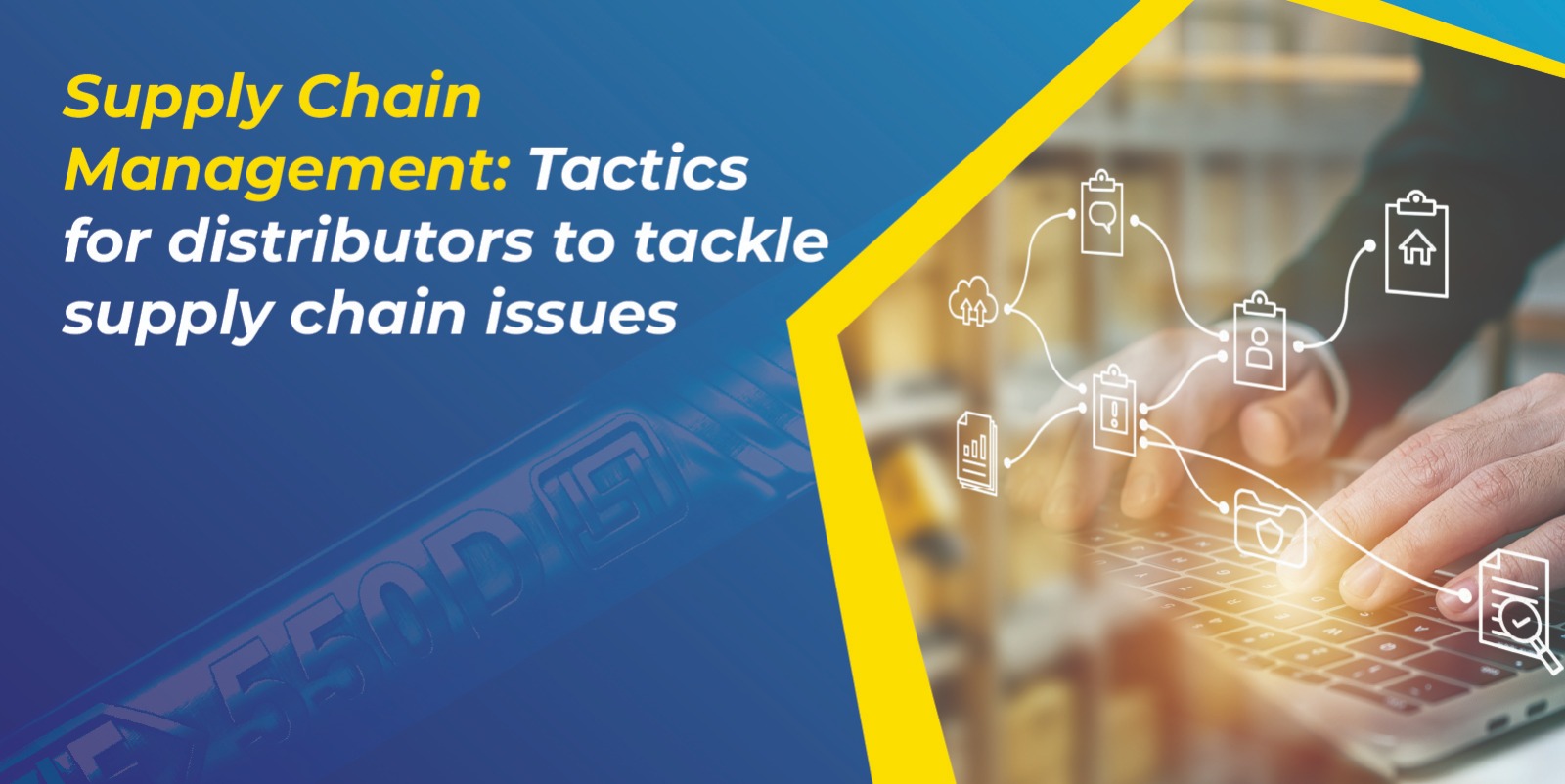Supply Chain Management: Tactics for distributors to tackle supply chain issues
With the advent of recent global disruptions, more businesses are looking to focus on their supply chain resilience. Many organisations are putting forward the pandemic driven upgrades to mitigate the future risks. However, the present level of supply chain disruptions and stress is much higher than before the pandemic.
Some of the major aspects include transportation bottlenecks, labor shortage, extreme weather conditions, cyber-attacks and most importantly inflation. And all these pressures are more compounded by the unpredictable market scenario.
What are supply chain disruptions?
A supply chain includes a network of companies and people working together to create and deliver a product to the customer. A supply chain disruption is a circumstance that interferes with a company’s operations. It disrupts their flow of production, sales and even distribution. They can cause significant harm to an organisation by slowing down the shipping operations, increasing costs, degrading product quality, and damaging brand reputation.
The supply chain problems can have a severe impact on the overall performance of an organisation. And there are certain supply chain strategies that the companies must adapt to for reducing the risks and mitigate the impact of disruptions. It includes preparing backup-supplier arrangements, increasing the inventory levels and by restructuring the supply lines.
There are certain digital technologies that support these strategies by improving supplier networking, analytical capabilities and visibility. This will in turn help the companies to closely monitor their supply chain, detect the potential problems and make necessary plans to prevent costly headaches.
How do you handle the supply chain issues?
There are certain factors like the rough terrain and even storms as a part of extreme weather conditions that are causing an issue to the supply chain. And most of these problems are omnipresent and are unpredictable. Therefore, every company should have a backup plan to handle these disruptions. So, there should be certain practices that ensure smooth running of the resilient supply chains and overcome the disruptions without much hassle.
- Identify the potential risk factors.
Supply chain managers should begin by organising an inhouse forum and addressing their risks. Typical supply chain risks, like bankruptcies, can be more easily measured and managed. Combining a supplier’s financial history with the knowledge of the product lines can help assess the exposure.
On the other hand, moving targets can be certain unknown risks that pose a threat to the supply chain. While the supply chain managers can identify the risks to mitigate them, they should also integrate digital solutions to detect the disruptions.
- Developing a contingency plan
A world where risks are prevalent, there should be agile supply chain plans that must be based on other supplier relationships and long term and short term strategies to avert the issues and solve those that occur. A basic contingency plan would contain steps from identifying the cause of disruption to prioritising the significant operations.
It would also include shifting the orders to other vendors, rebalancing the inventory and communicating the plans to the stakeholders. A key feature is that the contingency plan must also be reviewed and updated on a frequent basis.
- Monitor and analyse supply chain data.
Visibility provides a path to uninterrupted supply chain operations. And the companies should use digital tools to gain visibility. Layering on software like demand planning and inventory management applications will help avoid the disruptions.
- Implementing automated solutions to manage disruptions
Companies can increase efficiency if they can manage every stage of the supply chain process. It would also save them time and reduce unnecessary expenditures. For example, the sensors can track the inventory levels and automatically restock them when they go down. Moreover, these sensors can also track and report the condition and status of the goods.
In the back office, the robotic processes can prevent the mistakes caused while ordering goods. Many supply chain organisations have also started integrating AI to enhance predictive capabilities of automated functions like rerouting and reordering the products.
Conclusion
The supply chain disruptions have become a permanent routine for supply chain management. And there are a range of factors that might contribute to disruptions like extreme weather conditions. And these challenges are only increasing in frequency over time. And if they are not addressed properly, their impacts can be far reaching and damaging for the operations.
Therefore, it is essential for supply chain businesses to address these issues and employ the tactics which we have discussed in this blog for better visibility into their operations. It would help them stay competitive in today’s volatile marketplace.

